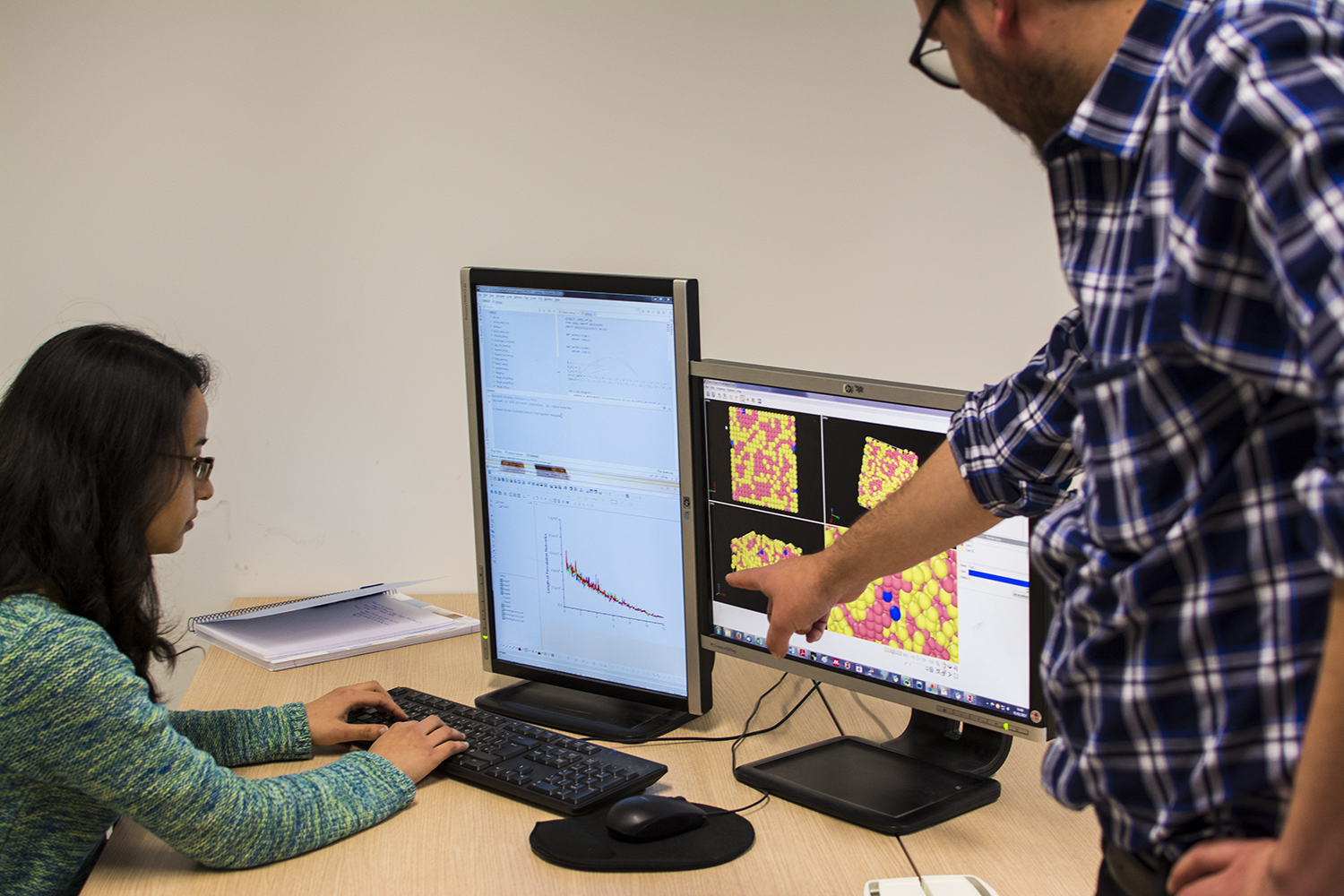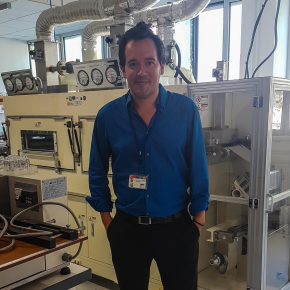A battery of simulations for Alejandro Franco
Alejandro Franco is never short of ideas and switches between simulations and experiments to improve battery performance. He works at the Laboratory of Reactivity and Chemistry of Solids (LRCS) on a European Research Council grant (for the ERC "Artistic" project1 ) where he is developing a platform to simulate and test online the many stages of battery manufacturing.
- 1Advanced and Reusable Theory for the In Silico-optimization of composite electrode fabrication processes for rechargeable battery Technologies with Innovative Chemistries.
At an age when some are still in school uniforms, others are already filing out patent applications. Alejandro Franco was only thirteen years old when he patented his first hydrogen fuel cell. He later became a professor at the University of Picardy Jules Verne and a member of the LRCS (CNRS/UPJV) and continues to work on his passion for new energies by studying many types of batteries: lithium-ion, lithium-sulphur, lithium-air, circulating batteries, etc.
Alejandro Franco's career path began in his native Argentina where he obtained a scholarship from the EGIDE2 organization to work for a year at the CEA (French Alternative Energies and Atomic Energy Commission) in Grenoble in 2001. He had already fallen for the language and the country on a high school trip and so he jumped at the opportunity offered by CEA for him to extend his adventure in France with a thesis on fuel cell modelling which he defended in 2005. He continued this research in Grenoble until 2013 and then became a professor at the University of Picardy Jules Verne and a member of the LRCS.
His work took a new turn with the award of the much sought-after European Research Council (ERC) Consolidator grant for young researchers along with two million euros of funding. The Research Network on Electrochemical Energy Storage (RS2E) made up of seventeen CNRS/University joint laboratories also supports Alejandro Franco's work.
These batteries are now established in everyday usage ranging from smartphones to electric cars. With the researchers associated with this project, he is trying to move beyond the methods of learning by failure by which we design blindly and hope to do better in order to improve four of the batteries' main properties.
The first factor is energy density which is the amount of energy stored per unit of weight or volume and the second is a reduction in recharging time. "These two elements are essential for electric cars," says Alejandro Franco, "to make them more competitive with gas-powered models that can be refuelled in minutes instead of hours." The batteries' durability must ensure a greater number of charge/discharge cycles and finally researchers are continually aware of the need to avoid the risk of overheating or even explosion.
"We are developing simulation tools that can predict the influence of manufacturing parameters" points out Alejandro Franco. "We want to identify the best combination for better electrodes. However, there are several design steps for lithium-ion batteries which can come into conflict." He gives the example of the fact that high pressure applied to a battery electrode can improve its electrical conductivity but may conversely reduce the porosity required to transport lithium ions in the electrolyte by filling this porosity. Simulations must therefore aim at providing the best possible solution.

Six months after the start of the ERC project, a website is already online and reporting on the project's initial progress. There are no jealously guarded secrets - communication is essential because the definitive platform will be accessible to all. "We insist on this interface because users will be able to study the manufacturing parameters using display tools directly on their browsers," enthuses Alejandro Franco.
Sharing is such a priority that users will not even have to download programmes for these resource-intensive simulations and everything will run remotely thanks to a supercomputer. Despite the early promise of this simulation, Alejandro Franco is not the kind to rely on theoretical tools alone. "We also have an experimental electrode manufacturing activity to test the electrodes' actual electrochemical performance."
Alejandro is very attached to training future researchers and has also designed different serious games for students with the Reviatech company in Compiègne. "For example, I have developed virtual reality software so users can plunge into the depths of composite electrodes. This helps Master's students to understand more about these materials and get a clearer visualization of their complexity." Alejandro Franco examines batteries in all their facets ranging from simulation to reality via the virtual sphere.
- 2Organization which helped students and researchers from other countries to come to France which became Campus France in 2012.
